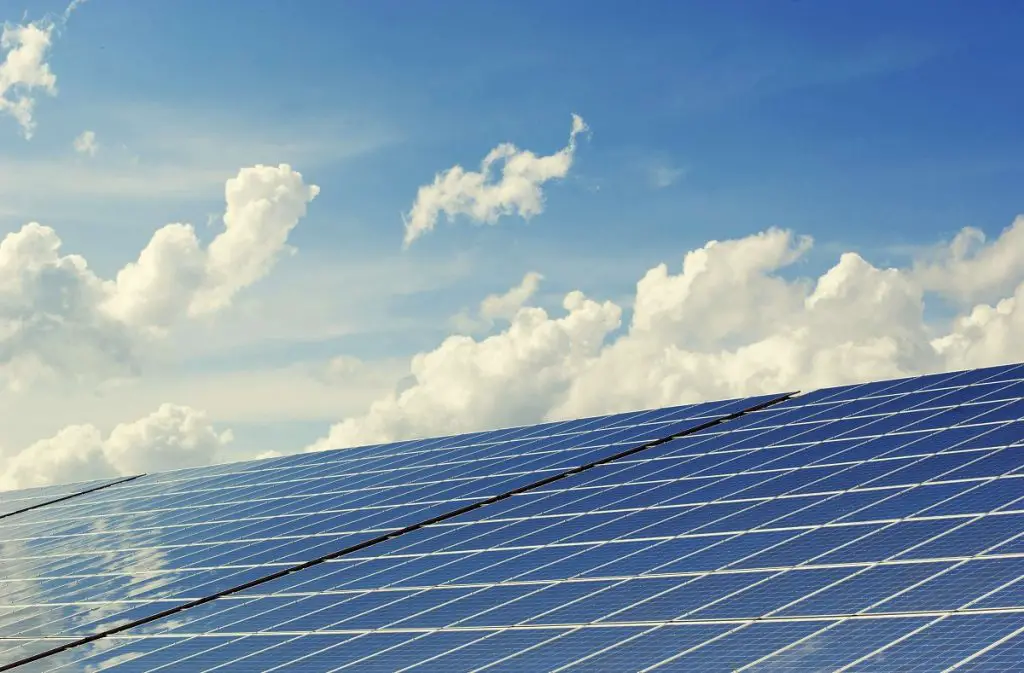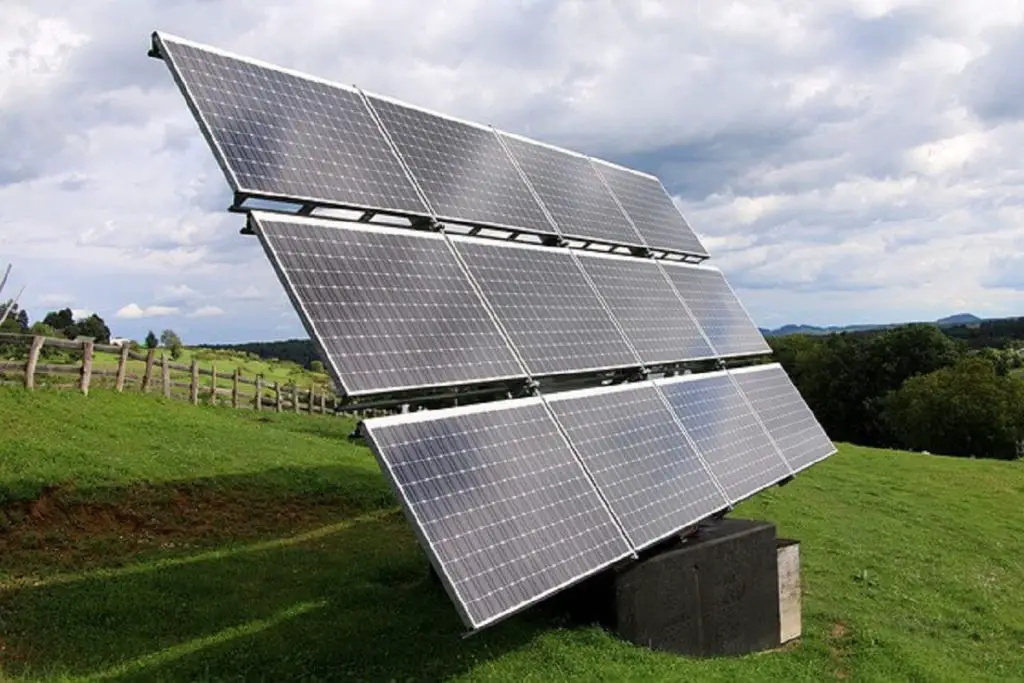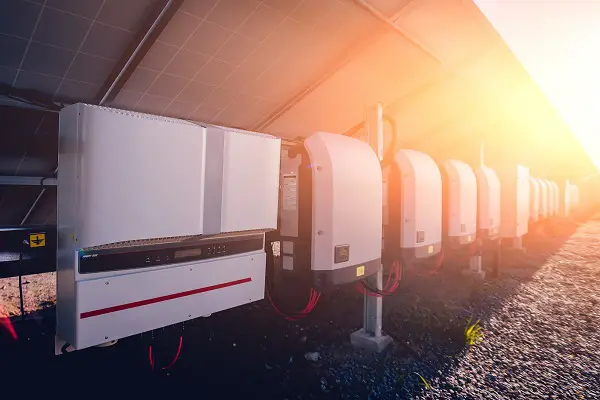How Solar Battery Works? All You Need To Know.
If we could get clean, non-stop energy from another source, why do we waste so much time and efforts shoveling coal and drilling for oil in different locations across the globe?
From research, it is clear that the seething ball of nuclear power – the Sun – is undoubtedly sufficient for the Solar System for 5 x 109 years ahead.
Most importantly, it is great to know that you can get an endless supply of electricity by combining solar batteries and energy.
The concept of solar power is commonplace in this generation, even though it may sound futuristic or strange.
For instance, a calculator and quartz wristwatch of solar energy technology will make life better for several individuals. Presently, there are many individuals with solar-powered lights in their homes; not to mention satellites and spaceships that use solar panels.
Solar Batteries In Everyday Life
Organizations like NASA are conducting numerous researches to develop a plane that is compatible with solar energy.
As part of the renewable energy movement, there is no doubt that more people will shift their focus on solar energy as global warming continually plagues the environment.
More so, the latest trends in technology show that society may switch to solar-powered items in the nearest future including homes, battery phones, homes, cars, and even city trash cans. (1)
The Earth surface receives a huge amount of energy from the sun to meet the demands of the human population for several centuries.
An unbalanced comparison shows that the earth harnesses only 1% of the Sun’s energy to run vehicles, appliances, factories, homes, and much more. (2)
While the reason extends beyond the normal use of fossil fuels, the main culprit is the fact that the technologies that collect the Sun’s energy can only abstract a minute fraction of the Sun’s energy into power supply or batteries.
Fortunately, the world is as dynamic as the ways of its people. The recent innovations have made way for greater improvement which will allow the Sun to be capable of more.
What’s New About Solar Energy?
Solar energy is so flexible that a tiny fraction of a battery-powered device or small appliance is compatible.
The most convenient strategy is to get a series of solar batteries that will be a perfect fit for the device – the most common type of solar energy collector is solar batteries or batteries.
Through a process called the photovoltaic effect, the solar batteries convert sunlight into electricity. Nevertheless, the process is not as simple as it sounds.
During the process, the solar battery channels the energy from the sun into an electric current.
However, semiconductors such as silicon serve as cover for the surface of the solar batteries – this method facilitates the entire process.
Metals are more conductive than silicon, but silicon weighs better on the conduction scale than insulators such as glass. Meanwhile, these options are suitable because light, heat, or impurities can alter their conductivity.
Light is made of small particles known as photons. When sunlight hits the surface of the solar battery, these photons displace the electron from the surface of the solar battery material.(3)
This flow of the electrons is unidirectional. You can power devices and machines when the flow of electrons causes an electric current.
The ability to recharge appliances and devices such as iPods and smartphone is due to the technologies of this century. For this reason, a great option would be to fit in battery chargers that compatible with solar energy.
This solar-powered battery charges internal batteries because of the presence of solar batteries which relax and collect solar energy throughout the day.
The flow of charge doesn’t require a wall socket because the charger transfers the stored energy to the available devices in the presence of a USB connection. (4)
The Significance Of The Batteries
Excess energy from the solar panels goes back into the grid when they produce too much energy.
Who says you cannot use that energy at a later time either in the night or when the Sun’s energy is minimal. Therefore, solar energy powers your home because of the presence of solar batteries.
When solar panels produce AC energy, the batteries store it as DC power for later use.
Afterward, the grid gets a surge of electricity once the battery attains full charge.
You can draw electricity from the grid when the battery is totally drained. In simple terms, solar batteries promote a constant flow of energy while decreasing the dependency of the home on grid-based energy.
Why Choose Solar Batteries?
Solar batteries save you money and time because of their ability to store renewable energy.
Your battery acts as a backup generator when there is a power outage as long as there is excess power in the batteries. You can also boost the solar energy system’s economics with solar batteries.
For people who experience demand charges or utility time-of-use rates, solar batteries can help you save more.
You can also manage the electricity flow with grid operators and utilities in place. Thankfully, solar batteries are the reason why renewable energy will be a part of the grid system of electricity.(5)
How A Solar Battery Works?
In a solar battery, you will find different semi-conductors namely:
- P-type (Zone P) – In the outer shell of some atoms, there is a deficiency of one electron than in Silicon. Prominent examples of such atoms are Boron and Gallium. The p-type silicon is made from a combination of such atoms. Using Boron as an example, an electron-hole or vacancy is created when Boron forms a bond with Silicon atoms. Remember, the vacant electron space becomes the abode of the Silicon atoms. The commonest reference to this type of semi-conductor is p-type silicon.
- N-type (Zone N) – Some atoms have an excess of electrons in the outer energy level than Silicon, and some usually have an excess of one electron. This book focuses on this type of atoms. An example of such an atom is Phosphorus which has five electrons in its outer energy level instead of the ‘misconstrued’ four. Phosphorus bonds with the Silicon atoms. Meanwhile, the bonding excludes a single electron. This free electron moves in the Silicon structure. The commonest reference to this type of semi-conductor is n-type silicon.
As shown in the figure below, the solar battery consists of two layers of Silicon which are next to each other: the p-type silicon and the n-type silicon.
From the explanation above, the n-type layer has an overflow of electrons while the p-type layer has excessive positive charges.
Nevertheless, the positive charges are in form of holes. These holes are due to absence of valence electrons.
Both layers meet at a shared junction. In this book, the junction is to be called a ‘point’. This point witnesses the flow of electrons from the n-type layer to the p-type layer.
By simple definition, the holes of the p-type layer receive the electrons from the n-type layer.
Result?
The result of the transfer of electrons is a depletion zone. It is known as the depletion zone because it characterizes the filling of holes by electrons.
However, the holes were initially present in the p-type of the depletion zone. As seen in the depletion zone, the process of filling the holes causes:
- Anions – ions with negative charges – in Zone P
- Cations – ions with positive charges – in Zone N
When anions and cations are in the same sphere, they create an opposing field which generates an electric field. Consequently, the electrons in Zone N will not fill the holes in Zone P because of the electric field.
There is a formation of holes when a solar battery receives sunlight. It is this natural phenomenon that displaces silicon electrons.
The holes are the vacancies caused by the displaced electrons. In an electric field, electrons move from Zone N to Zone P.
Electrons will travel from the n-type layer to the p-type layer via metallic connections between Zone N and Zone P. At the depletion zone, the electrons cross. Then, it creates a flow of electricity.

Schematic diagram showing the mechanism of the solar battery
The Efficiency Of Solar Batteries
The Law of Conservation of Energy shows that we cannot make energy or destroy it; we can only convert across different forms. (6)
Hence, a solar battery that receives a certain amount of light will produce an equivalent value of electrical energy – no more, no less. Practically, many batteries convert about 20% of the energy they collect into usable electricity.
The theoretical maximum efficiency of a single-junction silicon battery is about 30% – referred to as the Shockley-Queisser Limit.(7)
The reason is that sunlight has in itself a wide range of photons, each with different energies and wavelengths.
A single-junction solar battery catches photons within a reasonable frequency band through an optimization process which ensures that it wastes the remaining photons.
These photons go to waste when they have too much energy or do not have sufficient energy to displace electrons.
With multiple junctions to capture photons of different energies, a cutting-edge laboratory battery manages about 46% efficiency in great condition.
How Much Power Can Solar Batteries Make?
The European Photovoltaic Industry Association/Greenpeace in 2011 says that the amount of solar energy that hits the surface of the Earth can meet the present global energy needs up to about 10,000 times and more. Theoretically, this is humongous.
Now, let us shift our focus on pure sunlight. By theory, a cloudless day will reflect sunlight even at midday to generate about 1000 watts in total.
This is also the condition that there is maximum insolation or illumination when the solar rays fire perpendicularly to the surface of the Earth.
Practically, the best the Earth will get is about 250 watts per square meter. This condition is viable by adjusting the northern latitudes’ time and the tilt of the planet.
The condition also applies on cloudless days. Depending on your location – northern regions such as Scotland or Canada or other obliging regions such as Mexico or Arizona – that calculation translated into about 6 kWh every day.
When we multiply that by the annual production, the figure is anywhere between 700 to 2,500 units of electricity (700 and 2,500 kilowatt per hour) for each square meter.
There is greater potential for solar energy in hotter regions. For instance, Europe receives less useful annual energy than the Middle East by about a factor of 50 to 100%.
Solar Battery Chargers
There are dynamic solar battery chargers that have become a part of certain products.
One of these prototypes is the solar backpack. A solar backpack is mostly found in external devices (such as smartphones, computers and mp3 players).
It is an ordinary cloth backpack with a series of connections to a built-in battery (the solar batteries). Now, you can charge on the go.
The most convenient applications for solar backpacks are in rescue crews and hiking. More so, military personnel without access to electricity while they spend long hours in the sun can benefit from these backpacks.
Watches are not left out as well. As far back as the early 1970s, there were solar watches whose designs changed and transformed to suit the needs of the present era.
A Solaris watch, for example, did not have a digital display or a numbered dial.
Purple lights signified the minutes while the blue lights were the hours. Both lights would move in a circle when you fix the solar batteries.
But these days, you will find numerous watches in intricate designs and styles.
Regardless of the aesthetic differences, there are always solar batteries in every solar-power device which will convert the energy from the sun into electrical energy before the device will work.
Solar-Powered Transit
The major source of climate-changing carbon dioxide and pollutants is transportation.
Therefore, there will be a significant improvement in the environment when we can fit vehicles and airplanes with solar power.
In racing events, you will find that there is a high deviation from normal cars to solar-powered cars because many of the car models in the car race have solar panels on wing-like projections.
In 1995, a Solar Car Challenge was organized for students in high school. It shows that solar energy has been in the spotlight for a while. (8)
About 19 years later, a concept car was the big sensation at the Ford Motor Company. This car isn’t commercially available but test results show that it would travel as far as 997 km with full solar power.
The name of the car was C-MAX Solar Energy Concept.(9) To collect sunlight, the car has solar panels on the roof.
Whenever the sun’s energy is minimal, the solar concentrator (acts like a magnifying glass) in the roof will increase the conversion amount of solar energy by a factor of eight.
The École Polytechnique Fédérale de Lausanne in Switzerland also developed a solar-powered airplane called the Solar Impulse.
In solar aviation, it has set some milestones in the industry such as a 60 days trip across the United States. This distance was between New York City and Calif in San Francisco.
The solar batteries on the wings of the plane collect and store energy from the sun so that the plane can fly in the night.
Solar Power Stations
There is a need for solar power to supply a larger proportion of electricity to the power grid if it must have an effect on the production of energy.
Before 2014, about 140,000 homes would receive energy from one of the largest solar power plants in the world according to predictions.
You will not find traditional solar panels at Ivanpah Solar Electric generating system. The mechanism is such that the solar power plant abstracts direct sunlight from the Mojave Desert via 300,000 mirrors.
The reflection is collected on giant boilers on three different towers that are 459 foot tall. As soon as the boiler pipes receive the concentrated sunlight, the water becomes superheated steam.
Afterward, a turbine generates electricity when it receives the steam from the boiler. It is from this point that businesses and homes get their supply of electricity.
Nowadays, solar technology can be found at the core of our everyday life. With several trials and errors with consistent improvement, there may soon be a man-made Earth where there is direct energy from the sun. In the history of humanity, this feat will be the most powerful energy generator.
Solar-Powered Houseboat
According to predictions; houseboats may soon join the bandwagon of solar-powered designs.
Houseboats, as the name implies, are boats that are suitable for use in the home or for businesses. Orhan Cileli, an industrial designer, created a houseboat with the concept that the Sun’s energy and water currents supply the energy needed to move the boat.
The houseboat concept, Pearl, resembles a sphere with half its body immersed in water and the other half above water. The fishing bobber is the origin of the inspiration.
Despite drifting currents, the fishing bobber stays afloat.
Pearl remains a prototype and little is known about whether the technology will soon become a reality. However, the concept may become the bedrock of similar ideas that will make our future more flexible and easier.
Final words
Unfortunately, solar power hasn’t caught on due to technological, political, and economic reasons.
In most countries, the economic viewpoint suggests that electricity from fossil fuels is cheaper than the one generated from solar panels. There is huge fossil fuel infrastructure in the world at the moment.
Unfortunately, powerful oil companies who seem to have an eye for solar technology keep investing in oil and gas reserves.
The political viewpoint also suggests that fossil fuel companies have fewer environmental regulations than renewable energy sources.
However, solar technology is practically new and ‘work in progress
P.S. If you find this post useful and interesting, please do not hesitate to share it.
If you have something to add- Leave a comment below!



